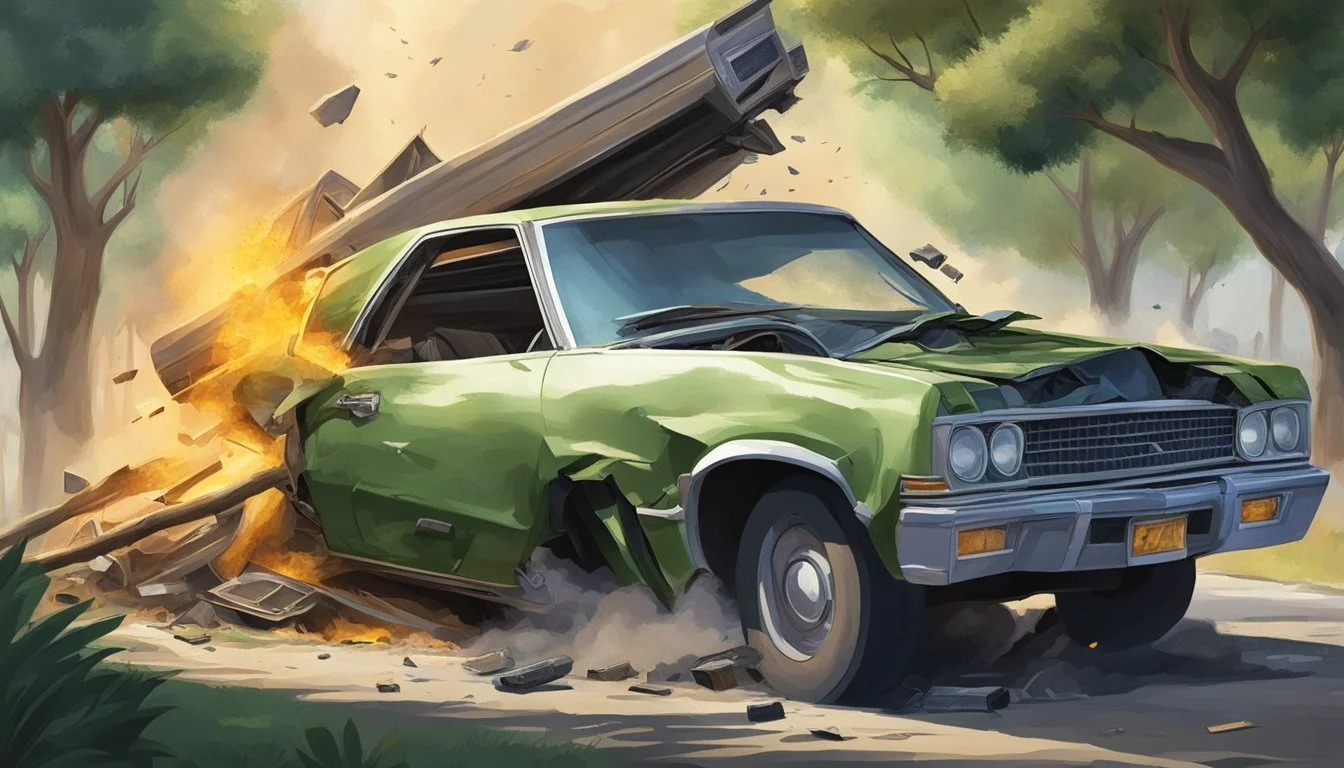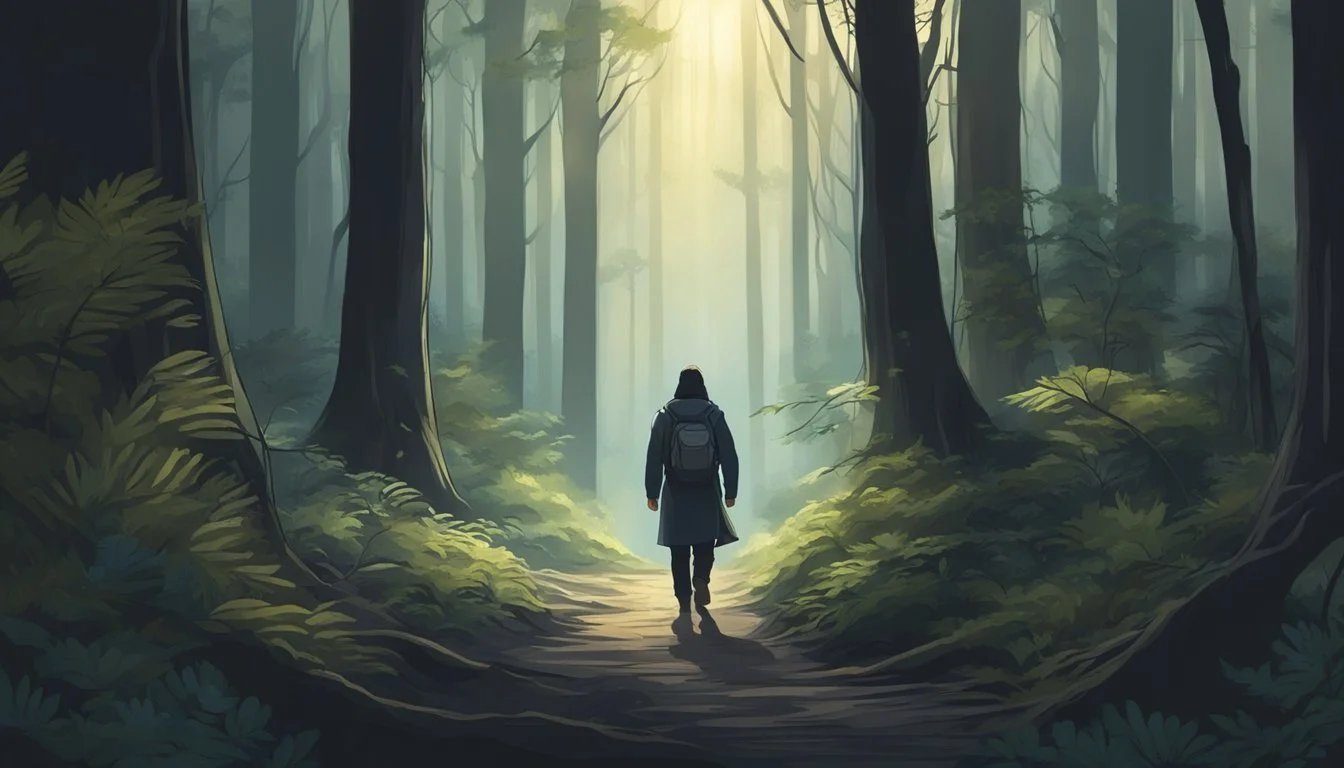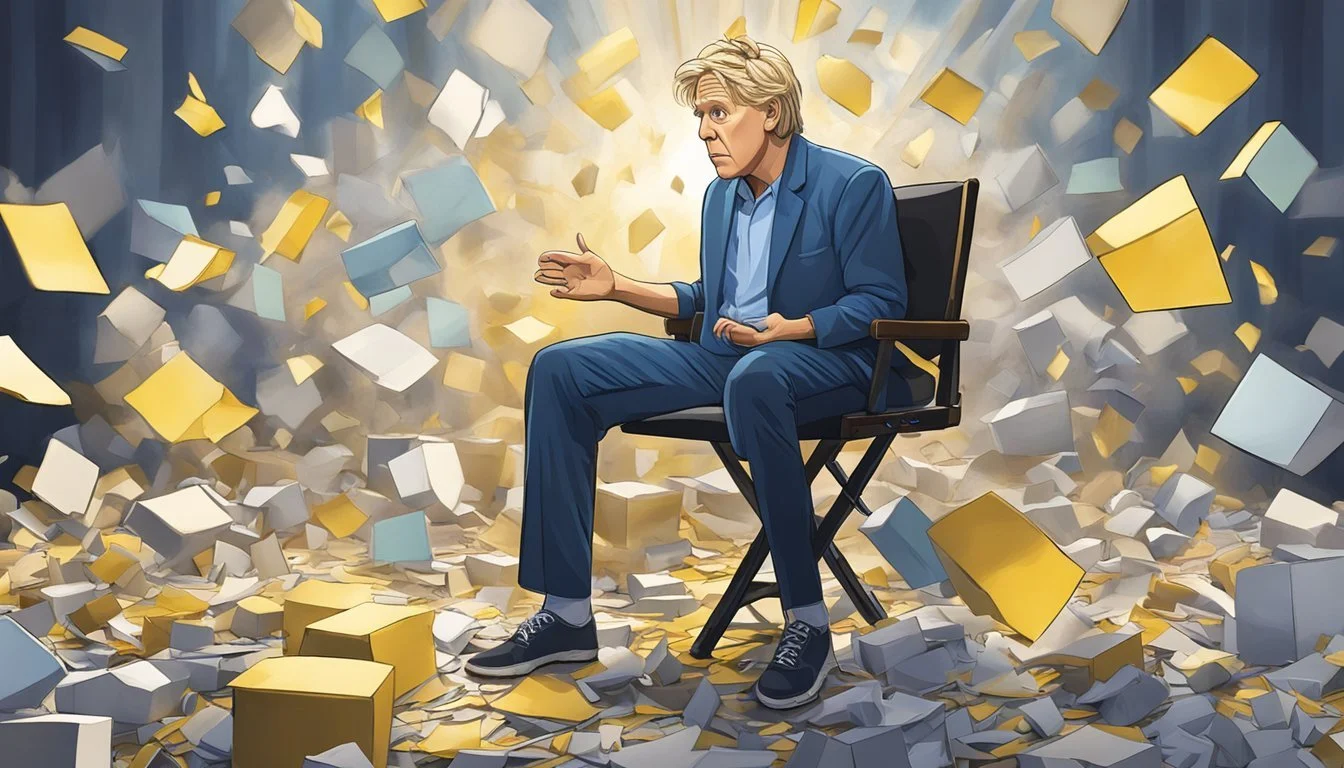Surviving the Crash: Gary Busey's Brain Injury and Recovery Journey
Gary Busey's life took a dramatic turn on December 4, 1988. The Hollywood actor, known for his roles in numerous films and TV shows, suffered a severe motorcycle accident that nearly claimed his life. Riding without a helmet, Busey sustained a traumatic brain injury that would profoundly impact his future.
The accident left Busey fighting for survival, requiring brain surgery and extensive rehabilitation. His journey from the brink of death to recovery showcases both the fragility of the human brain and its remarkable capacity for healing. The incident not only altered Busey's physical appearance but also affected his behavior and mental health in ways that would become apparent in the years following.
Busey's struggle with brain injury and its long-term effects offers a compelling look into the challenges faced by survivors of severe head trauma. His story highlights the importance of safety precautions and the potential consequences of risk-taking behavior, while also demonstrating the resilience of the human spirit in overcoming life-altering adversity.
Gary Busey's Career Highlights
Gary Busey's acting career spans several decades, marked by notable performances and critical recognition. His versatility and unique screen presence have left an indelible mark on Hollywood.
Early Years and Breakthrough
Gary Busey began his acting career in the 1970s with small roles in films and television shows. His breakthrough came in 1978 when he landed the lead role in "The Buddy Holly Story." Busey's portrayal of the iconic rock 'n' roll pioneer earned him widespread acclaim. He immersed himself in the character, even learning to sing and play guitar for the role.
The film's success catapulted Busey into the spotlight and showcased his ability to fully embody complex characters.
Critical Acclaim and Oscar Nomination
Busey's performance in "The Buddy Holly Story" not only resonated with audiences but also caught the attention of critics and industry professionals. His portrayal of Buddy Holly earned him an Academy Award nomination for Best Actor in 1979. This recognition solidified Busey's status as a serious actor capable of delivering powerful performances.
The Oscar nomination opened new doors for Busey, leading to more prominent roles in major productions.
Iconic Roles in 'Lethal Weapon' and 'Point Break'
Following his Oscar nomination, Busey took on memorable roles in popular action films. In 1987, he played the ruthless Mr. Joshua in "Lethal Weapon," opposite Mel Gibson and Danny Glover. His intense performance as the film's main antagonist became one of his most recognizable roles.
In 1991, Busey appeared in "Point Break" as FBI Agent Angelo Pappas, alongside Keanu Reeves and Patrick Swayze. His portrayal of the seasoned agent added depth to the high-octane thriller.
Busey's other notable roles include the werewolf hunter in "Silver Bullet" (1985) and the eccentric Navy SEAL commander in "Under Siege" (1992). He also appeared in "Predator 2" (1990), further cementing his status as a versatile character actor in action-packed blockbusters.
The Motorcycle Accident and Its Aftermath
Gary Busey's life took a dramatic turn in 1988 due to a severe motorcycle accident. This event led to a near-death experience, traumatic brain injury, and a challenging journey of recovery.
The Incident and Immediate Response
On December 4, 1988, Gary Busey crashed his motorcycle in Los Angeles. He wasn't wearing a helmet at the time of the accident. The impact caused Busey to hit his head on a curb, resulting in a fractured skull.
Emergency responders rushed him to the hospital. Doctors quickly assessed the severity of his injuries and determined that immediate surgery was necessary.
The accident left Busey on the brink of death. His injuries were life-threatening, requiring urgent medical intervention to save his life.
Surviving Traumatic Brain Injury
Busey underwent emergency brain surgery to address the damage from the crash. Surgeons worked to relieve pressure on his brain and repair the skull fracture.
During the operation, Busey claims he experienced a near-death event. He reported seeing the "other side" and believes he temporarily died before being revived.
The actor suffered severe brain damage as a result of the accident. This injury significantly impacted his cognitive functions and behavior.
Busey's recovery prognosis was initially uncertain. Doctors were unsure if he would regain full brain function or face permanent impairments.
Challenges in Recovery and Rehabilitation
Following surgery, Busey faced numerous obstacles in his recovery. He had to relearn basic skills like walking and eating.
The brain injury affected his speech and thought processes. Busey struggled with memory issues and had difficulty controlling his emotions and impulses.
Rehabilitation was a long and arduous process. It involved physical therapy to regain motor skills and cognitive therapy to address mental challenges.
Busey's personality underwent noticeable changes post-accident. Friends and colleagues observed shifts in his behavior and demeanor.
The recovery journey tested Busey's resilience. He had to adapt to a new reality while working to regain his former abilities.
Mental Health and Spiritual Journey
Gary Busey's life-altering accident led him on a profound journey of self-discovery and healing. His experiences shaped a unique spiritual outlook and approach to overcoming personal challenges.
Exploring the Spiritual Realm
During his brain surgery following the 1988 motorcycle accident, Busey claims he had a near-death experience. He describes entering a "spiritual realm" where he encountered angelic beings. This event profoundly impacted his worldview and faith.
Busey believes this experience gave him insights into life beyond death. He often speaks about the peace and love he felt during this time. The actor credits this encounter with strengthening his spiritual beliefs and providing a new perspective on life's challenges.
Buseyism: Gary's Unique Perspective
Busey developed a personal philosophy he calls "Buseyisms" - creative acronyms that express his life insights. These word breakdowns reflect his unique way of perceiving the world after his brain injury.
Examples of Buseyisms include:
FAITH: Fantastic Adventures In Trusting Him
HOPE: Heavenly Offerings Prevail Eternally
These sayings help Busey communicate his spiritual beliefs and positive outlook. They've become a signature part of his public persona, often shared in interviews and on social media.
Overcoming Substance Abuse
Prior to his accident, Busey struggled with cocaine addiction. The brain injury and subsequent recovery process became a turning point in addressing his substance abuse issues.
Busey credits his spiritual awakening and newfound faith for helping him overcome addiction. He embraced sobriety as part of his healing journey, viewing it as essential to his mental and physical recovery.
The actor's battle with addiction and his path to sobriety have become integral parts of his story. Busey often speaks about the importance of maintaining his health and staying drug-free to support his ongoing brain injury recovery.
Personal Life and its Influence on His Career
Gary Busey's personal life has significantly impacted his professional trajectory. His family relationships, financial challenges, and health issues have shaped his career and public persona.
Family Dynamics and Fatherhood
Gary Busey has been married three times and has three children. His son Jake, born in 1971, followed in his footsteps and became an actor. Busey's relationship with Steffanie Sampson began in 2008, and they have a son together born in 2010.
Fatherhood has played a crucial role in Busey's life, often providing stability during tumultuous periods. His children have been a source of support throughout his career ups and downs.
Busey's marriages and divorces have been widely publicized, affecting his public image and career opportunities.
Financial Struggles and Bankruptcy
Busey's financial woes have been well-documented. In 2012, he filed for Chapter 7 bankruptcy, listing debts between $500,000 and $1 million.
His financial troubles stemmed from:
Unpaid taxes
Medical bills
Credit card debt
These financial setbacks limited his ability to be selective with roles, often leading him to take on projects for monetary reasons rather than artistic merit.
The bankruptcy filing marked a low point in Busey's career, forcing him to reassess his spending habits and professional choices.
Health Battles Beyond the Brain Injury
While Busey's 1988 motorcycle accident and resulting brain injury are well-known, he has faced other health challenges:
In 1997, he was diagnosed with cocaine overdose and underwent detox treatment
He battled throat cancer in 2012, undergoing surgery to remove a malignant tumor
These health issues have:
Interrupted his work schedule
Affected his ability to memorize lines
Influenced the types of roles he could take on
Despite these challenges, Busey has continued to work in the entertainment industry, demonstrating remarkable resilience in the face of adversity.
Legacy and Impact on the Entertainment Industry
Gary Busey's journey through brain injury and recovery has left an indelible mark on Hollywood and beyond. His experiences have shaped both his career and his role as an advocate for important causes.
Advocacy for Brain Injury Awareness
Busey's motorcycle accident in 1988 thrust him into the spotlight as a champion for brain injury awareness. He became a vocal supporter of the Traumatic Brain Injury Act, also known as the Helmet Act. His personal story has helped educate the public about the importance of motorcycle safety and proper helmet use. Busey's involvement in these causes has raised significant awareness about TBI and its long-term effects.
Inspirational Figure in Overcoming Adversity
Busey's resilience in the face of adversity has made him an inspirational figure in Hollywood. His ability to continue acting and maintain a public presence despite his struggles has encouraged others facing similar challenges. Busey's autobiography, "Buseyisms," offers insights into his near-death experience, addiction battles, and recovery process. His unique perspective and determination have inspired many in the entertainment industry and beyond.
Busey's candidness about his experiences has helped reduce stigma surrounding mental health issues in Hollywood. His continued presence in films and television shows demonstrates that a brain injury does not necessarily mean the end of a career in entertainment. Busey's journey serves as a powerful example of perseverance and adaptability in an industry often focused on perfection and image.




